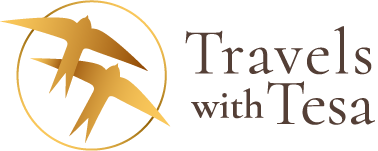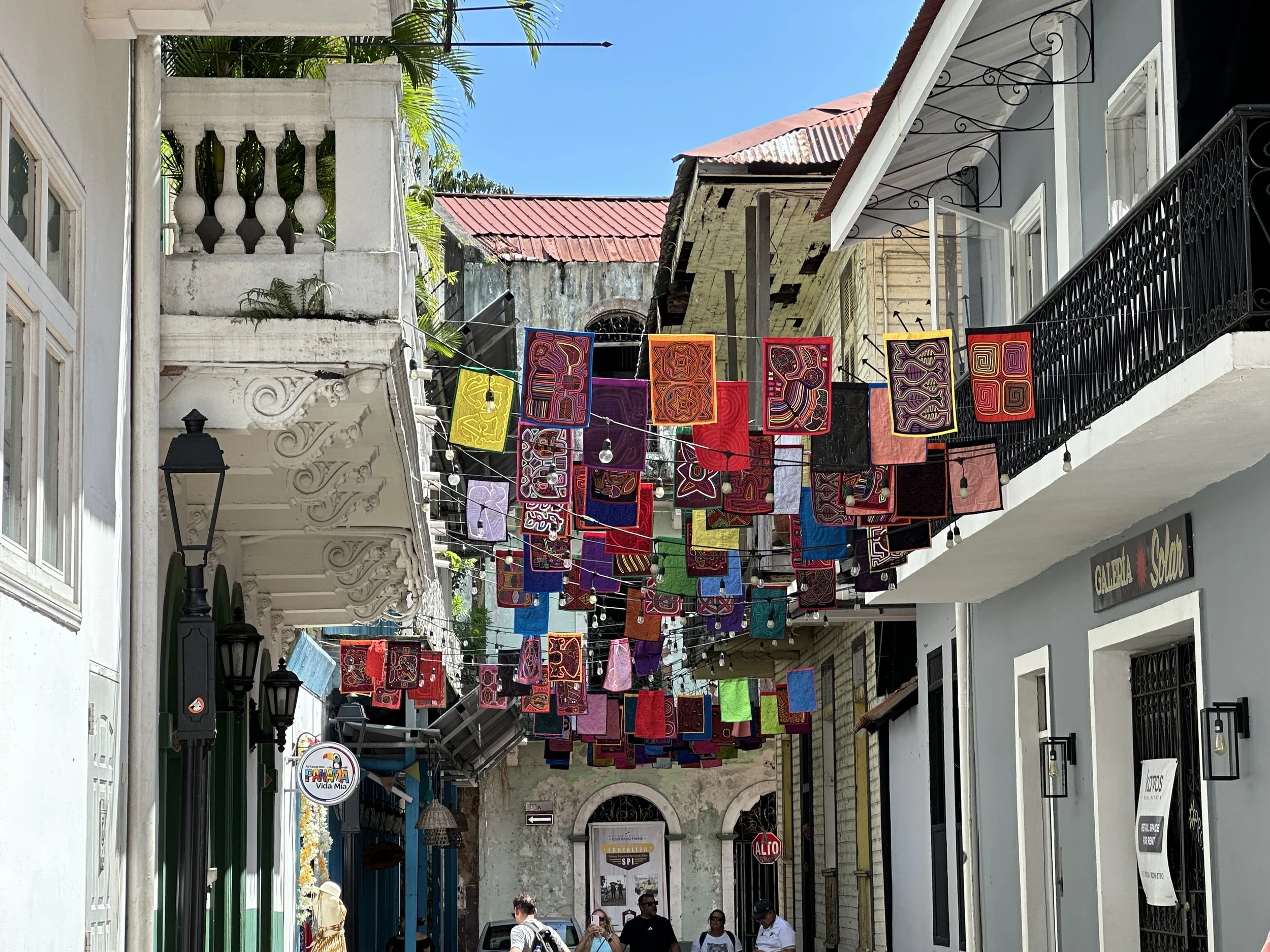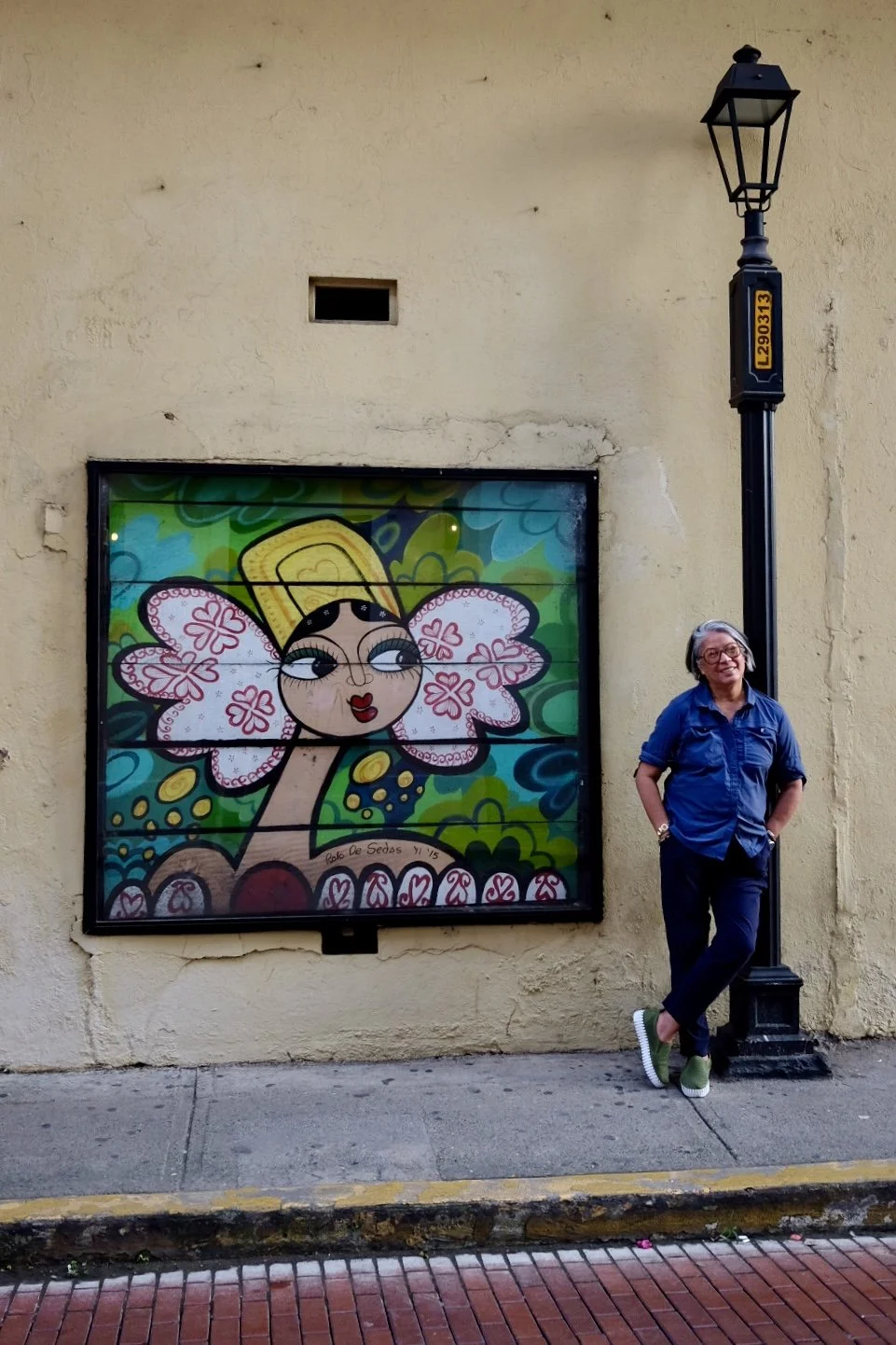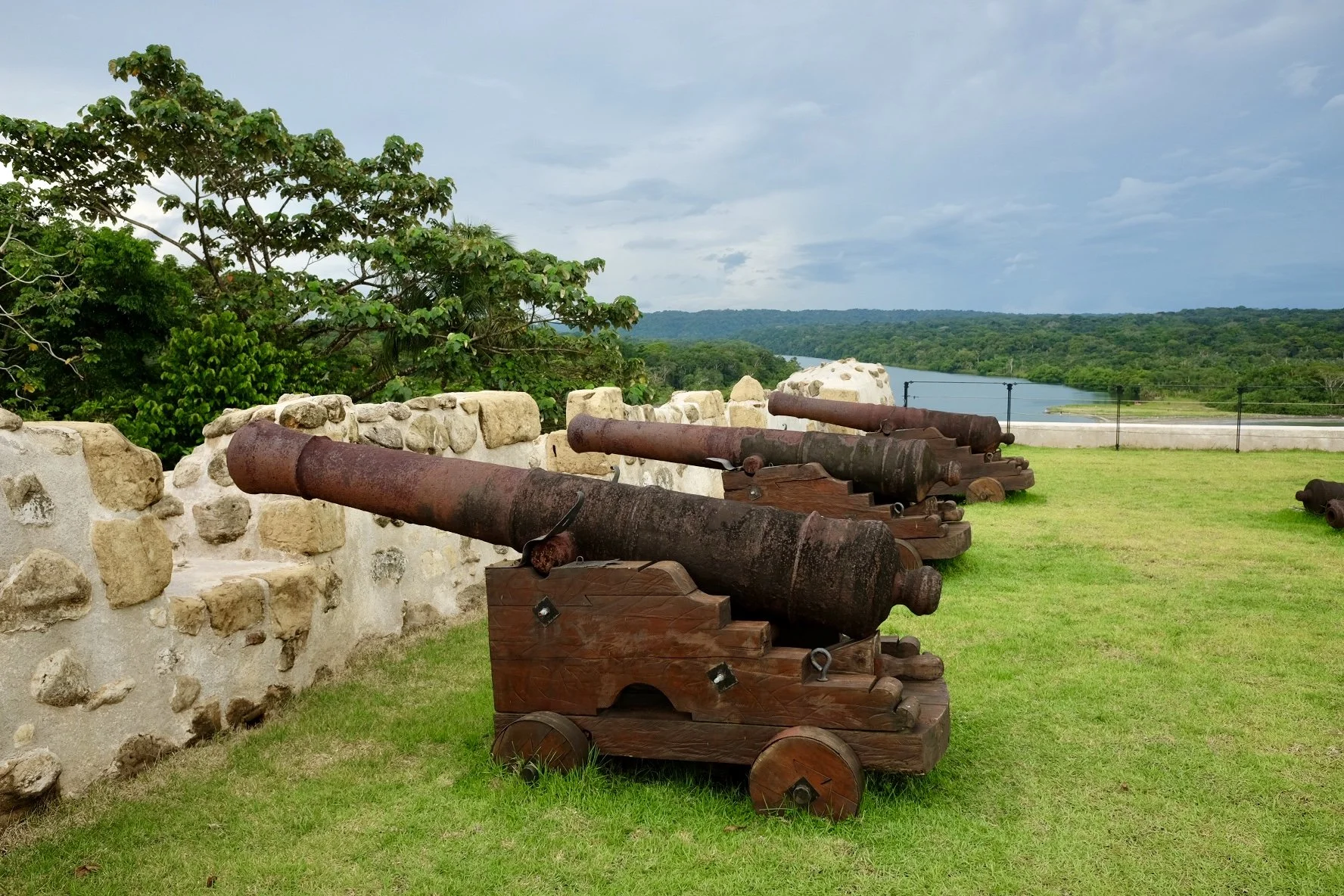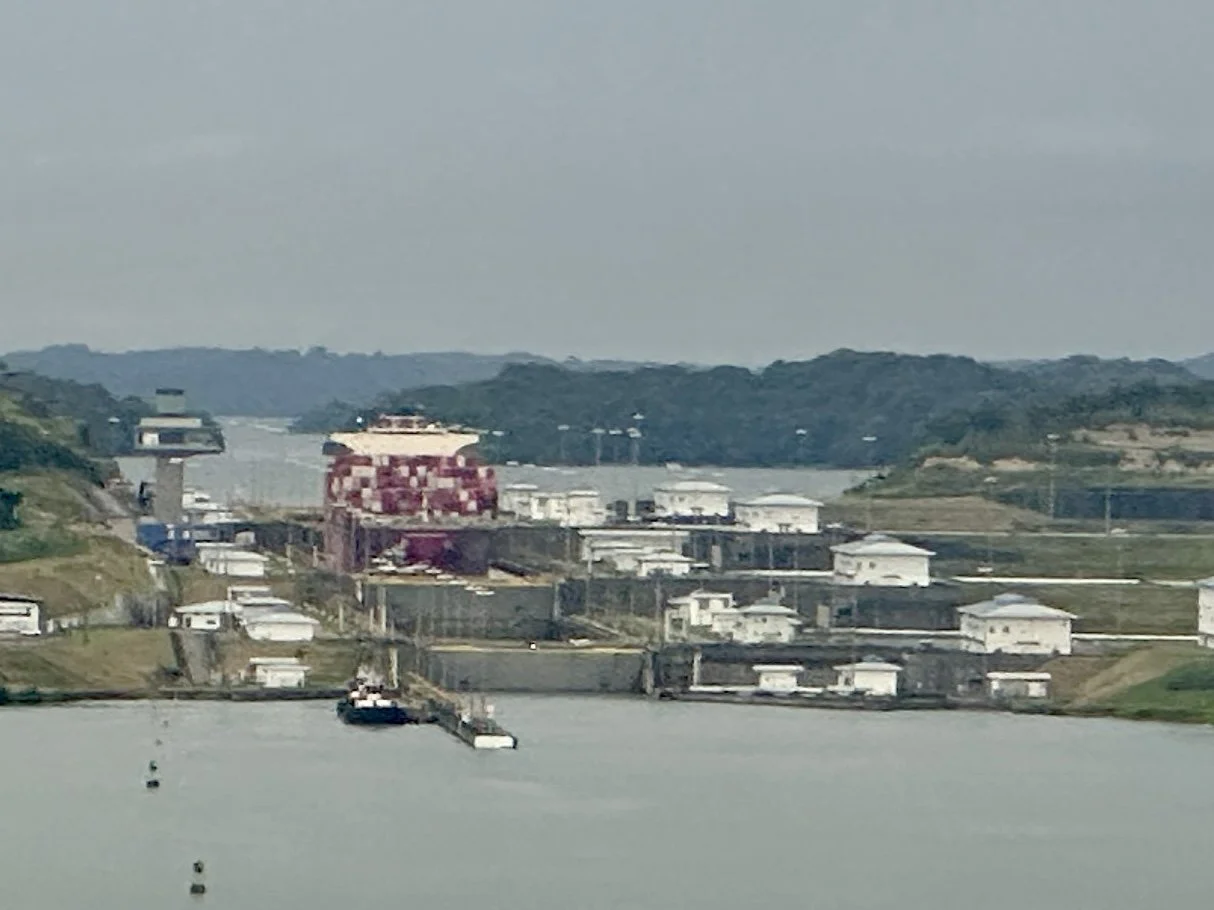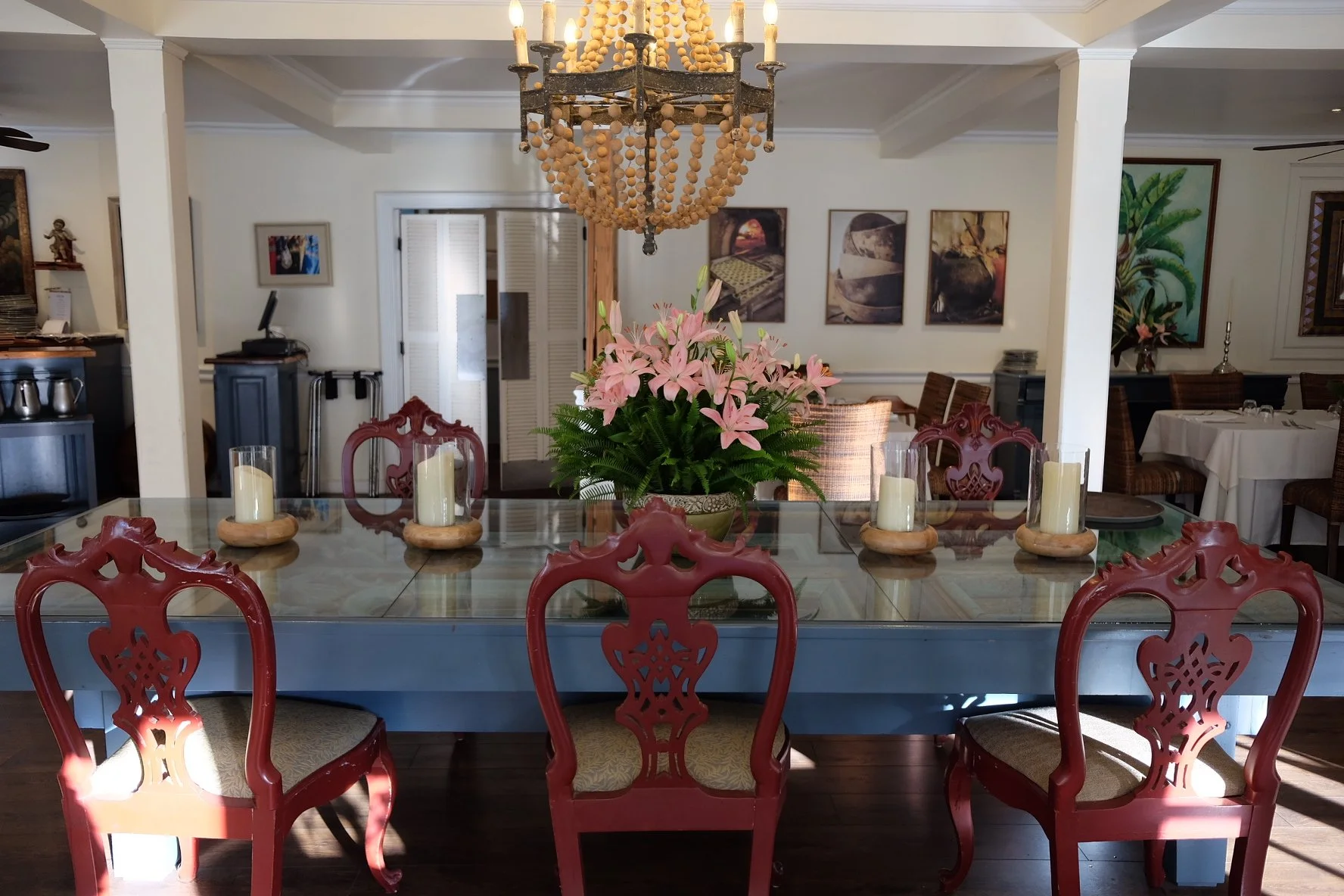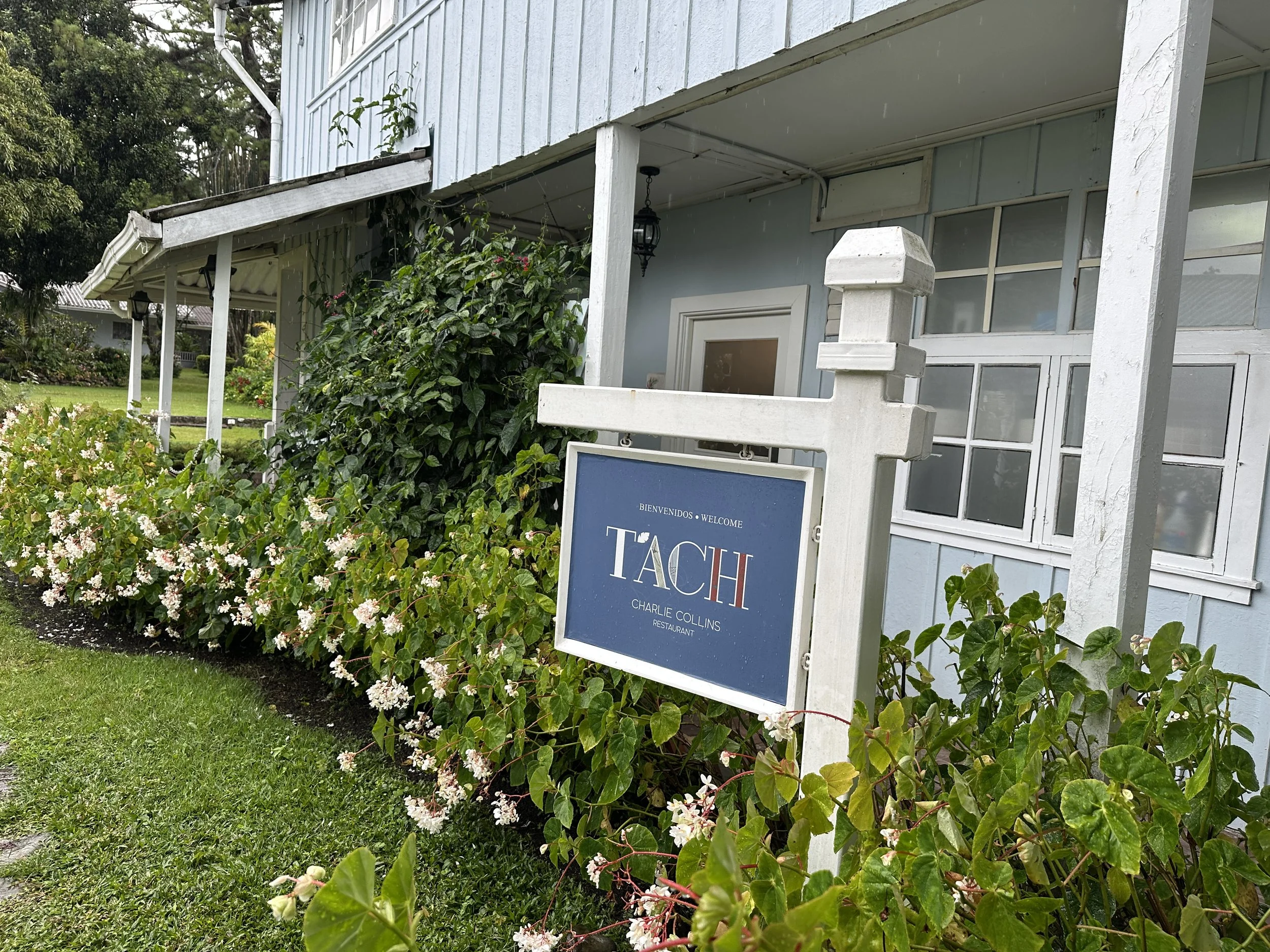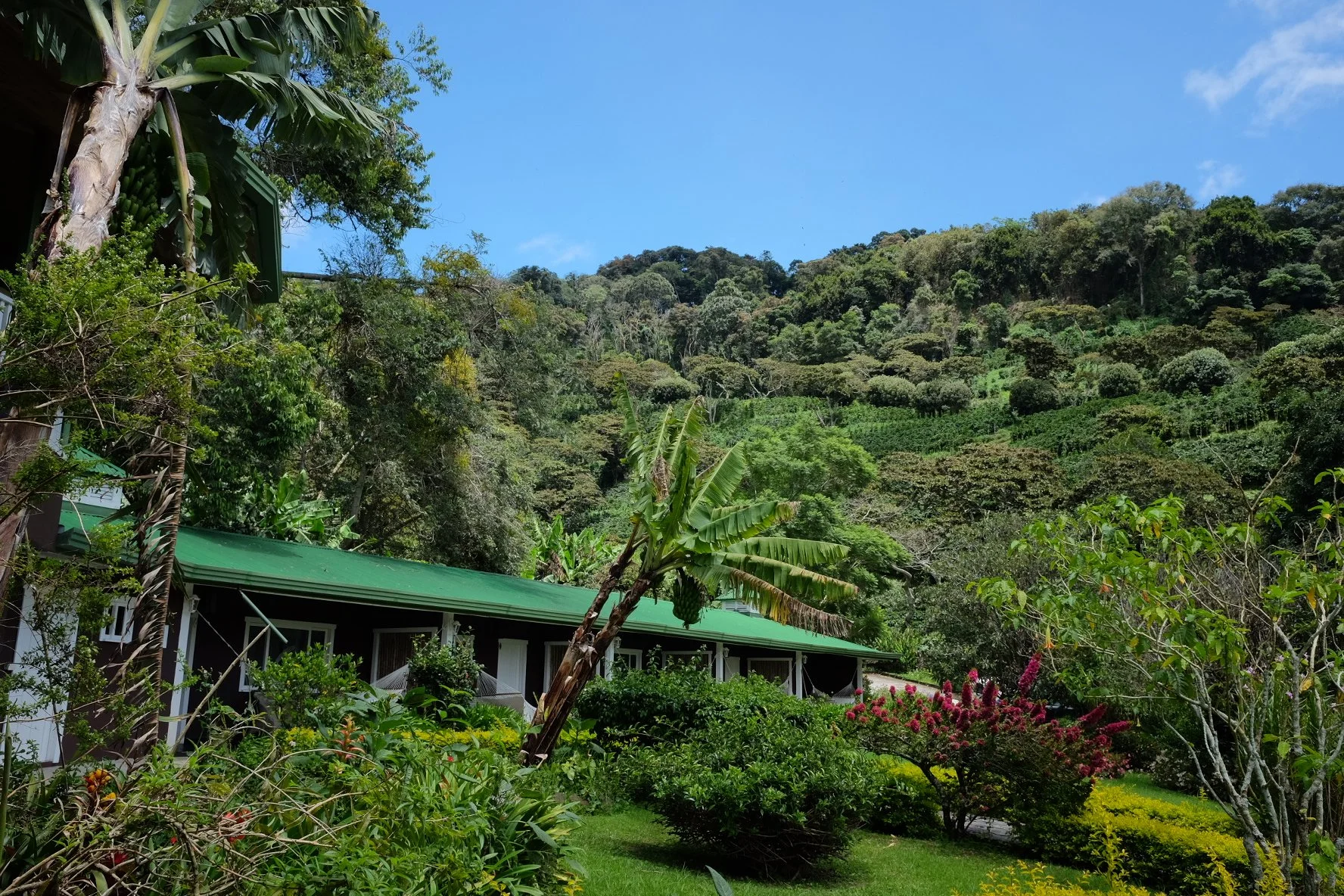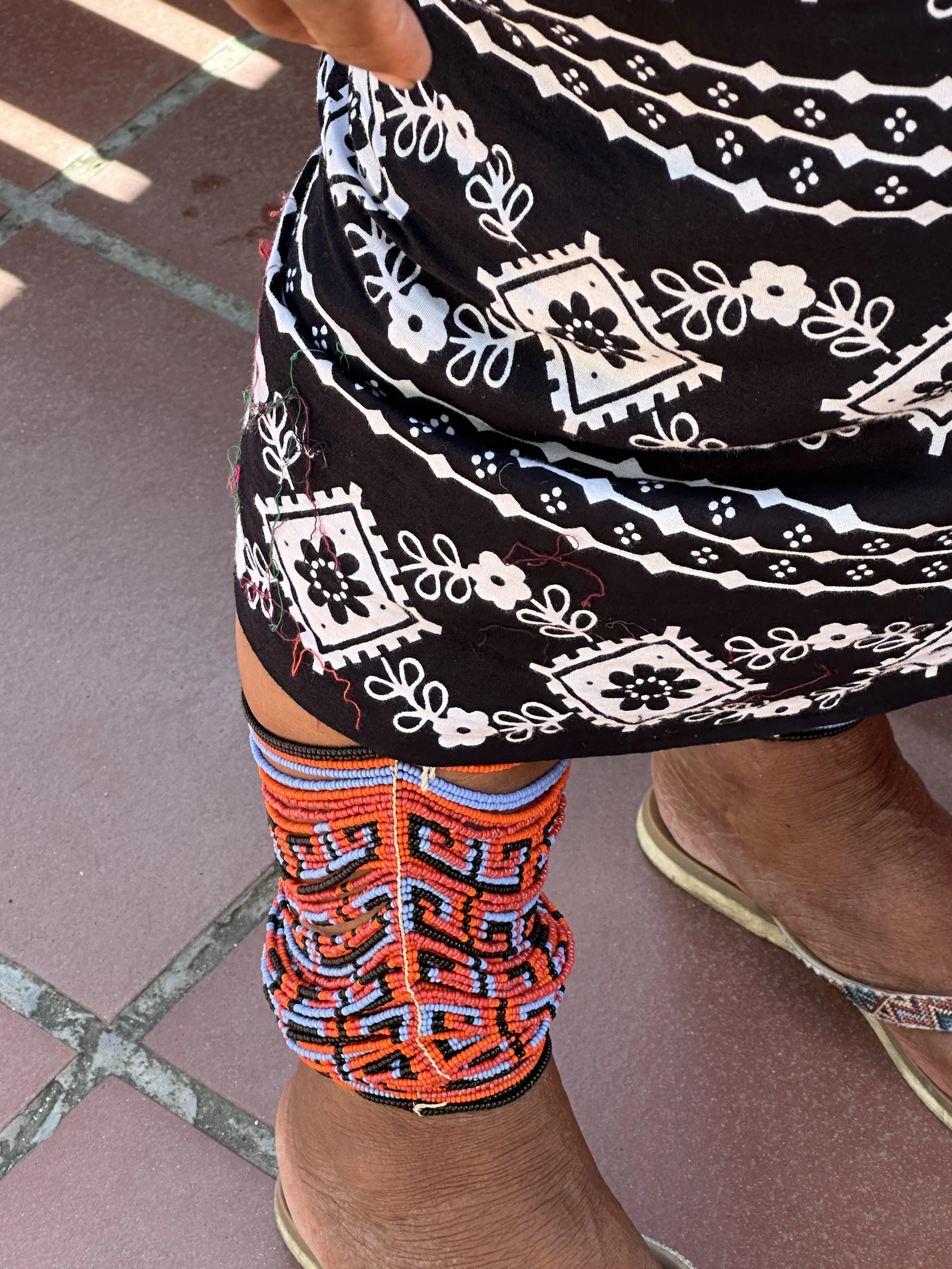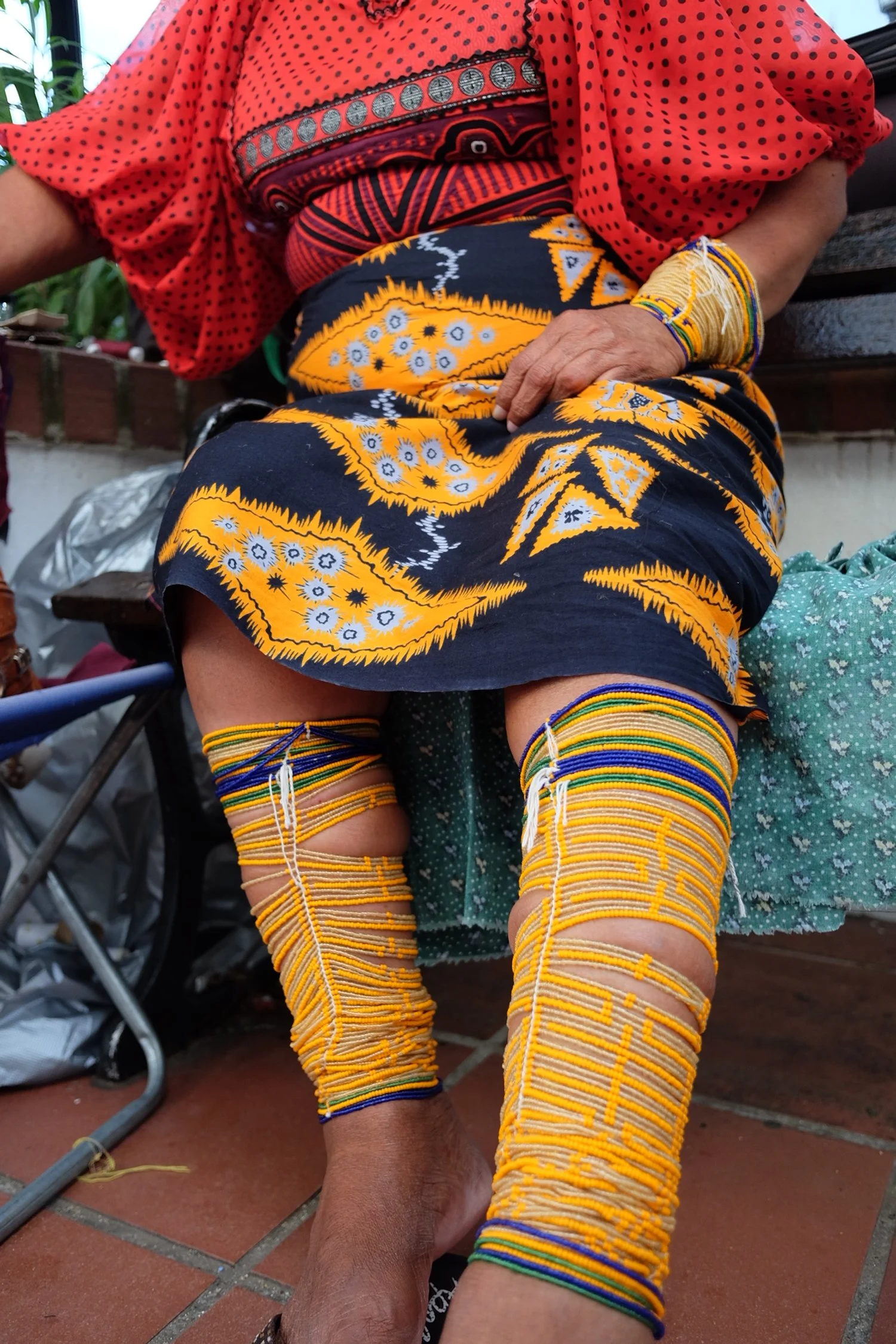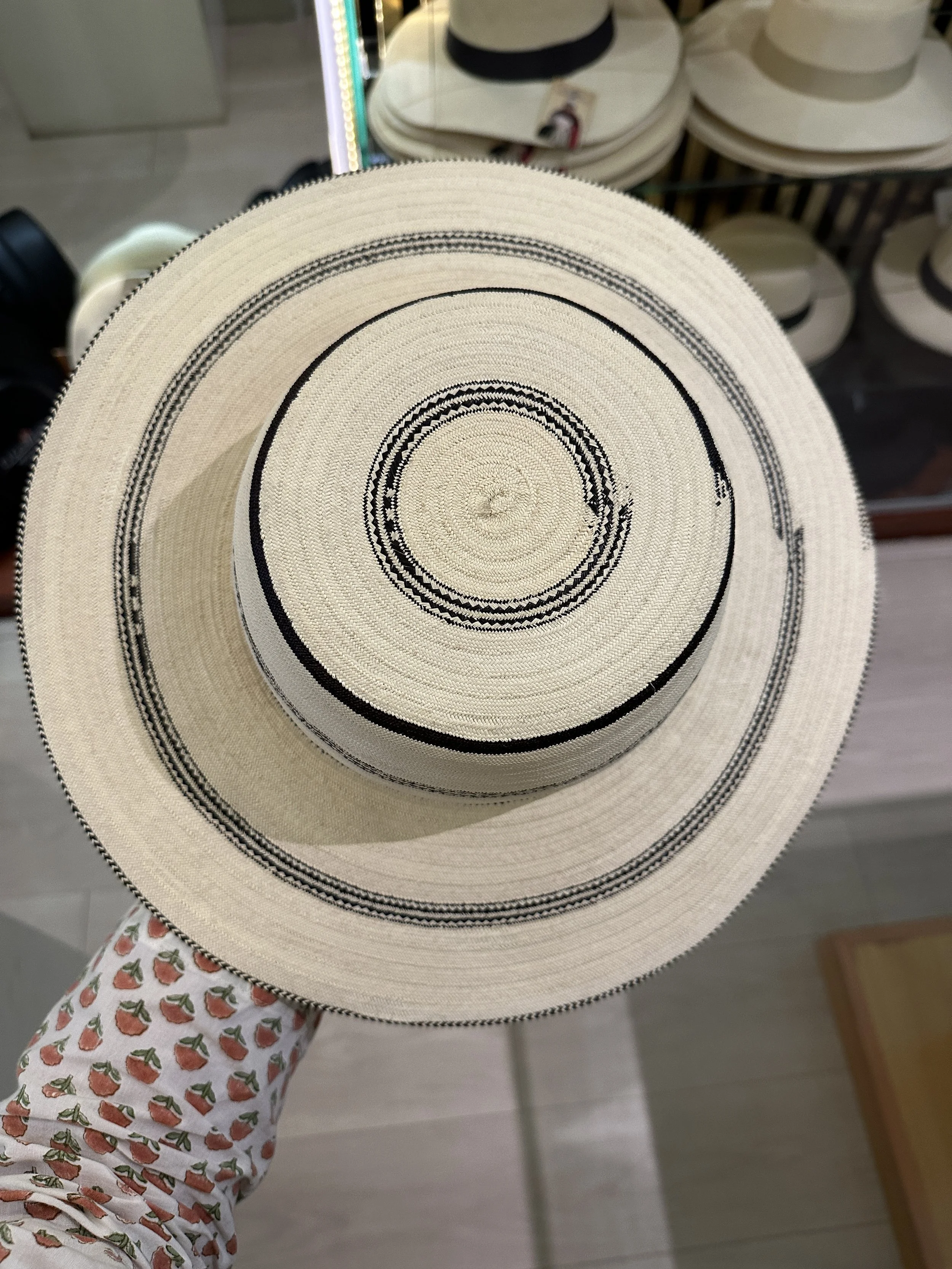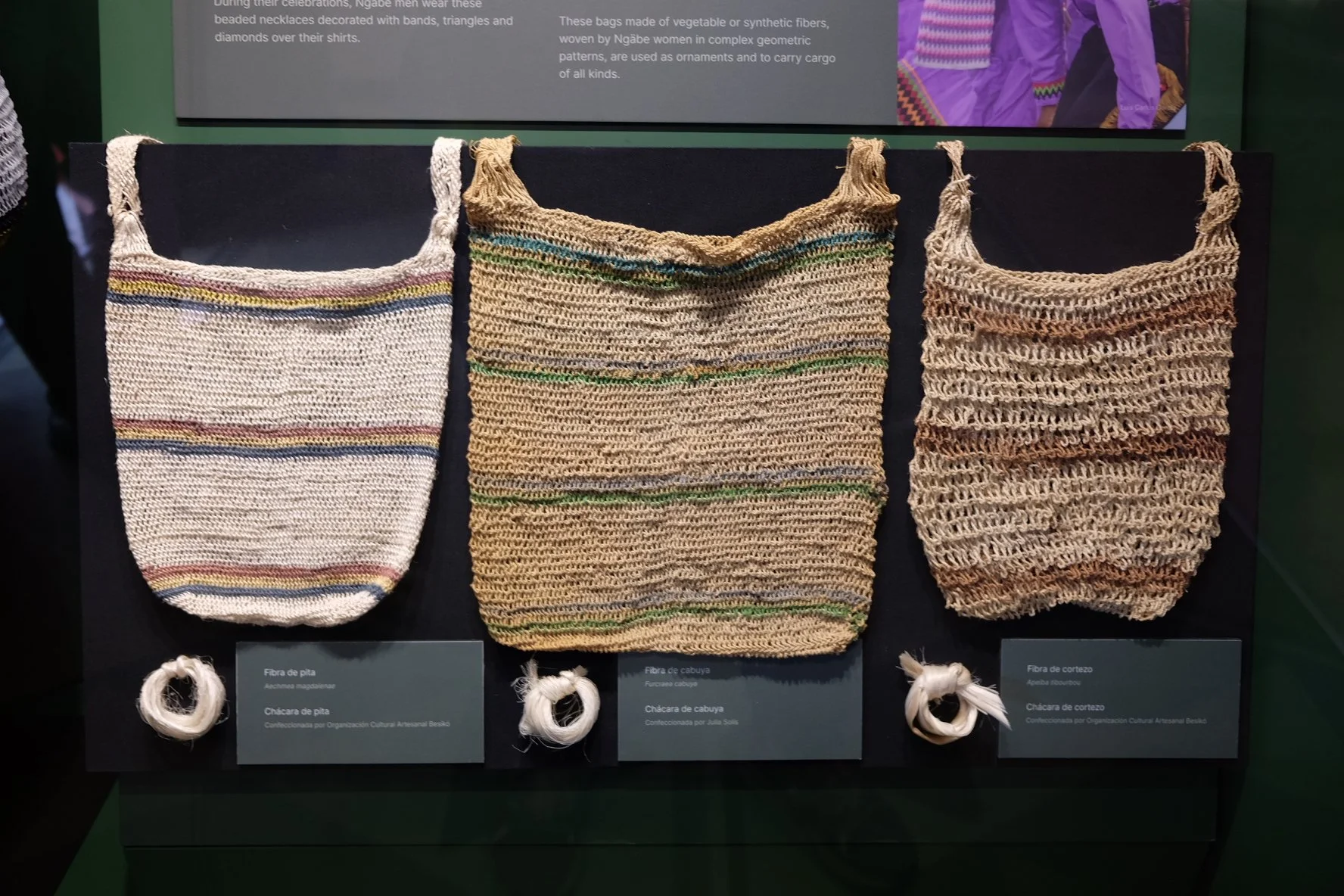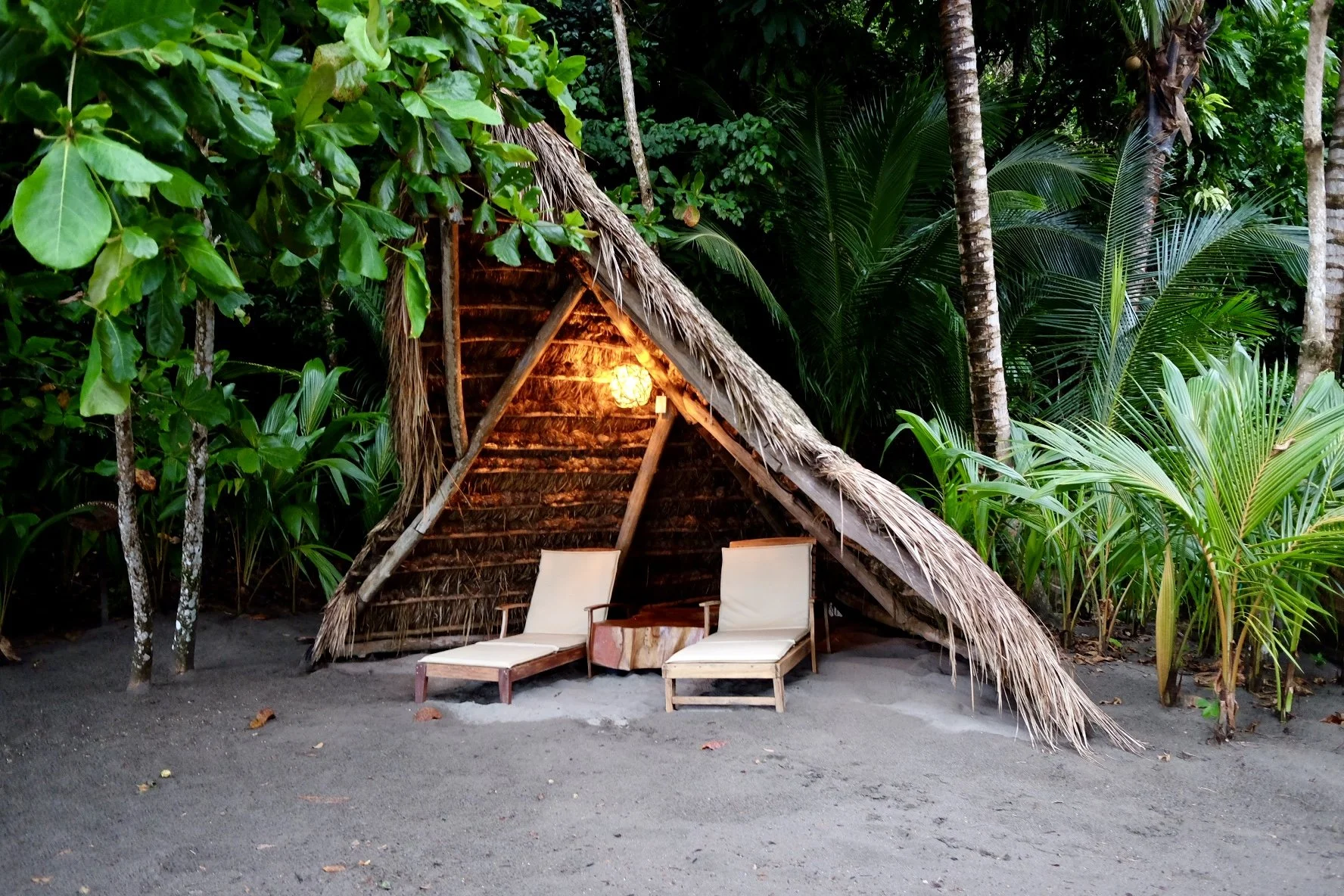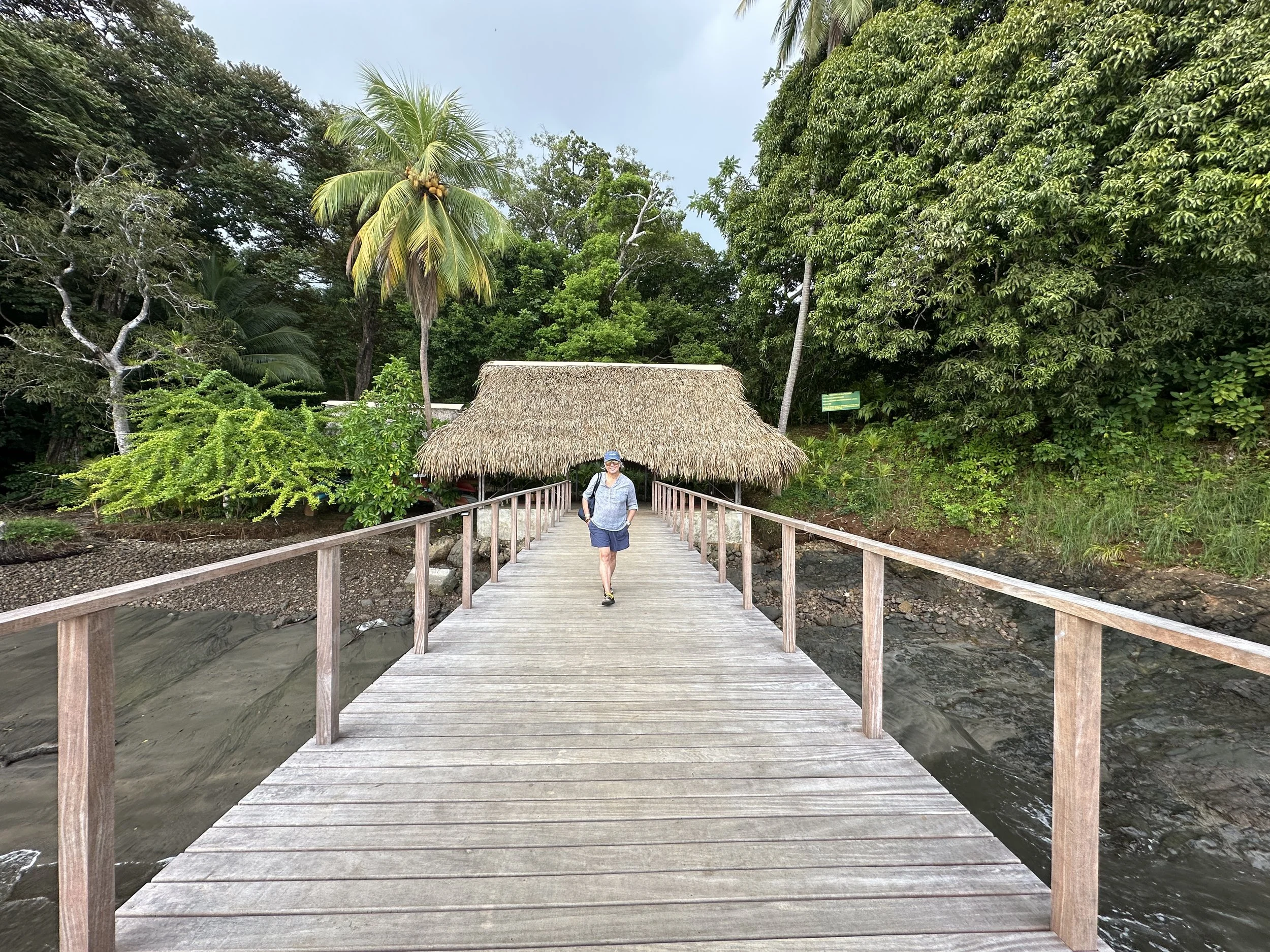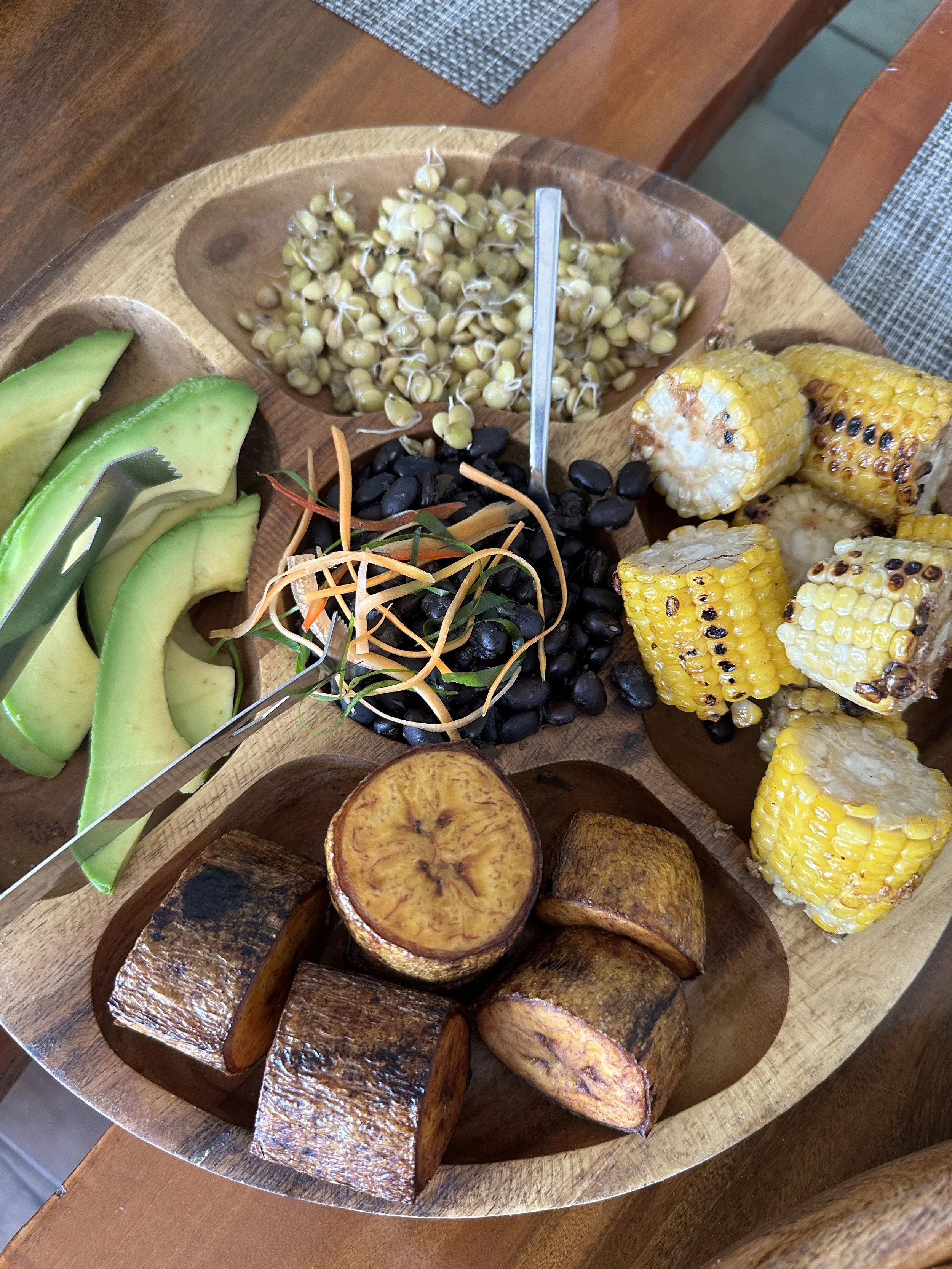Mention Panama and most people immediately think of the Canal. And yes, watching colossal ships slip between two oceans is mind-bending. But spend even a week here and you’ll realize Panama is so much more. This is a country where colonial plazas glow at golden hour, coffee blossoms perfume the highlands, indigenous artistry flourishes in everyday life, and barefoot-luxury islands spill into the Pacific.
Here’s what we found — Panama, layered and surprising, with a softness and charm all its own.
Casco Viejo: Softer than Cartagena
We began in Casco Viejo, Panama City’s 337-year-old colonial quarter. At sunset the cobblestones shimmered, balconies overflowed with bougainvillea, and a rum tasting at Pedro Mandinga reminded us that history here is best sipped slowly.
Think of Cartagena’s beauty — but with a gentler spirit. Panamanians are warm, kind, and welcoming, without the hard sell that sometimes shadows Cartagena’s streets.
Our base was the 5★ Sofitel Legend Casco Viejo, once a gentlemen’s club during Canal construction days and still the only hotel in the district with a pool. We’d also happily recommend Hotel La Compañía, where Spanish, French, and Beaux-Arts wings tell three centuries of stories, and the Amarla Boutique Hotel, a stylish bohemian hideaway with a rooftop jacuzzi overlooking the bay.
The Canal and the Forts of the Caribbean
One morning we drove two hours across the isthmus to Panama’s Atlantic coast. At the Agua Clara Visitor Center, we watched the expanded locks swallow an enormous ship, bridging oceans with serene efficiency. Afterwards, we continued to the Gatun Locks, where the original American-built chambers still crank along as they did a century ago — a living museum of engineering grit.
Nearby, the San Lorenzo Fort looked out over the Chagres River, its moss-covered walls once a bulwark against pirates. Here, jungle vines reclaim history, and Panama’s essence comes into focus: ancient and modern, wild and strategic, always a country that connects worlds.
Into the Highlands: Coffee, Cloud Forests, and Hacienda Secrets
From the tropics we flew west to Boquete, where the air cools as the land rises around Volcán Barú. Here, coffee cherries ripen slowly, yielding some of the world’s finest beans. At Finca Lérida, we traced the journey from cherry to cup and tasted the legendary Geisha coffee — floral, delicate, and worth its world-renowned reputation.
A morning hike beneath millenary Quercus trees led us into a cloud forest alive with quetzals, howler monkeys, and streams that sounded like whispered secrets.
In town, we stayed at the storied Panamonte Inn, which has hosted everyone from heads of state to Hollywood’s Ingrid Bergman (you can still book her apartment). Locals once called it the President’s Inn, and stepping into its courtyards felt like leafing through Panama’s living history.
That evening, we returned to a place some readers might remember: Panama’s Hidden Table: Hacienda Mamecillo in the Cloud Forest. Rolando Chamorro and Gabriella Carlsson welcomed us with warmth and pride. The night unfolded as a seven-course farm-to-table feast, each dish drawn from their own orchards, trout ponds, and greenhouses. Proof again that in Panama, storytelling happens at the table.
Panama’s Living Artistry
What truly sets Panama apart from its eco-famous neighbor Costa Rica are its seven active indigenous communities. Their artistry infuses daily life — in markets, in plazas, and even on the trails. We encountered work that turned fabric, fiber, and beads into cultural statements:
🪡 The Mola (Guna People): Reverse-appliqué panels in riotous color, once sewn into blouses, now art pieces in their own right. On our last night in Panama, I admitted I regretted not buying one — and to my surprise, our hosts Mauricio and Wilhelm presented me with a mola as a gift. It was one of the most meaningful souvenirs I’ve ever brought home.
🧺 The Chácara Bag (Ngäbe-Buglé): Handwoven from wild pineapple fibers, dyed with plants, and sturdy enough to carry the weight of tradition. I loved them so much I bought several in different sizes (from $15–30) — they’re as practical as they are beautiful.
📿 Chaquira & Tapahueso Necklaces (Emberá & Others): Beaded collars, dazzling in geometric detail, worn as both adornment and identity. I treated myself to a chaquira necklace for $30, and I regret not buying more — they’re wearable art.
👗 The Nagua Dress (Ngäbe-Buglé): Brightly colored dresses trimmed with triangles, worn proudly in the highlands. I even tried one on — but worried it wouldn’t quite translate back to New York. Still, it was irresistible to admire their boldness and craftsmanship.
🎩 The Panama Hat: Not Ecuador’s toquillo, but Panama’s own timeless style. As a hat lover, I tried on dozens in shops around Casco Viejo (priced $60–150 depending on quality) hoping one would fit. But the sizing is organic, and perhaps my hair too thick — so I left Panama without a hat. A heartbreak, but also a reason to return.
Together, these crafts form a living gallery of identity — just as central to Panama’s story as its canal or forests.
Barefoot Luxury: Isla Palenque
From Boquete we descended to the Pacific, boarding a boat bound for Isla Palenque. Once sacred ground for pre-Columbian tribes, today it’s a private eco-luxury hideaway with eight beachfront casitas and a six-bedroom villa, with two more villas on the way. Unlike postcard-perfect golden sands, Isla Palenque’s beaches shimmered in black volcanic sand — dramatic, striking, and unforgettable.
We spent a day out on the Gulf of Chiriquí, cruising aboard a sleek catamaran from Bocas del Mar (a great choice for families or fishing enthusiasts). We snorkeled in the crystalline waters of the Islas Secas, swam alongside shoals of tropical fish, and gasped as dolphins leapt at our bow. The true highlight? Spotting a humpback whale breaching just offshore — a reminder that Panama’s wild beauty isn’t confined to land.
Evenings back on Isla Palenque were barefoot simplicity at its best: toes in the black sand, a cool drink in hand, and the horizon melting into the sea.
A Culinary Revelation
Panama’s cuisine was an unexpected delight. Seafood is everywhere — ceviche as bright as the Caribbean, lobster and octopus grilled by the Pacific. Layer in Asian influences from Chinese and Japanese migration, European touches from Spain and Italy, and an abundance of tropical fruits, and you get a dining scene that feels both global and deeply Panamanian. Each meal surprised us; none disappointed.
What I’ll Remember Most
Panama is a country of contrasts — coffee estates and ocean adventures, pirate forts and historic hotels, indigenous artistry and French façades. I stood in the shadow of a 500-year-old tree one morning, sipped rum in a colonial plaza at sunset, and ended the day with a seven-course feast in a cloud forest hacienda.
The Canal may put Panama on the map, but it’s the people — soft, kind, and proud of their culture — the artistry, the food, and yes, even the souvenirs I carried home (and the ones I wish I had). That’s the Panama that stays with me.
✈️ Ready to explore Panama’s artistry and adventure for yourself? Let’s design your journey together. CONTACT ME and we’ll craft your perfect Panama itinerary.
